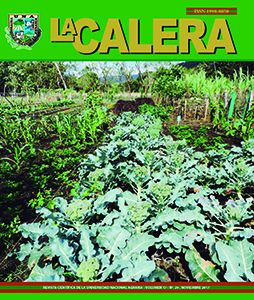A new beginning: agroforestry systems with cocoa, a biocultural legacy to build the future
DOI:
https://doi.org/10.5377/calera.v17i29.6529Keywords:
welfare, ethnobotany, cultural biodiversity, GIAHSAbstract
The food importance and industrial relevance of cocoa agroecosystem and its sociocultural perspective have given rise to this document as a reflection on the validity of strengthen the farmer capacity whose for centuries has preserved this locally adapted ancestral production system. The Ethnobotany of cocoa shows the cultural inheritance transmitted by custom, graphics, symbols or phytomorphic representations related to the use, distribution among different ethnic groups, domestication, agricultural work and agronomic management that gradually has been done around this Mesoamerican crop. The ancient Mayas and Aztecs began cultivation, designed its agroforestry systems, created elaborated trade routes throughout Mesoamerican region, and processing cocoa almost two thousand years ago. If the production of cocoa in Nicaragua for this period was an attraction for the ethnic migrations of the north and the south, it is huge possible that the Ethnohistory of this productive system in this country had have its peculiarities. The quality of Nicaraguan cacao could be associated with this biocultural heritage, which currently supports the opportunity to redesign a biodiversity agroecosystem, environmentally friendly and with high potential to generate export commodities. It is urgent to establish the link between all those who produce, identify, adapt and apply knowledge in this productive system, and the state simultaneously must to lead policies and incentives that strengthen producers. With the goal that they must to answer with increased efficiency to the challenges of the modern world by diversifying their farms, opening up new market niches and identifying themselves with the adaptive capacity of traditional agriculture in the face of future needs.
Downloads
1467

